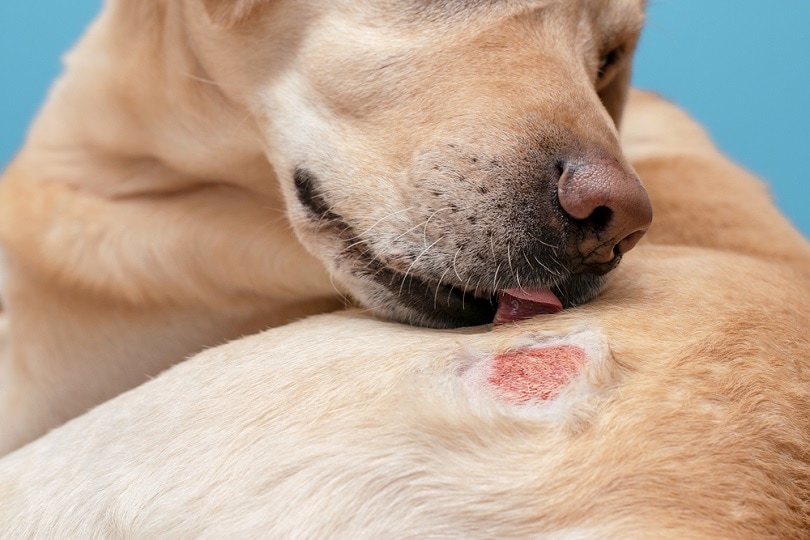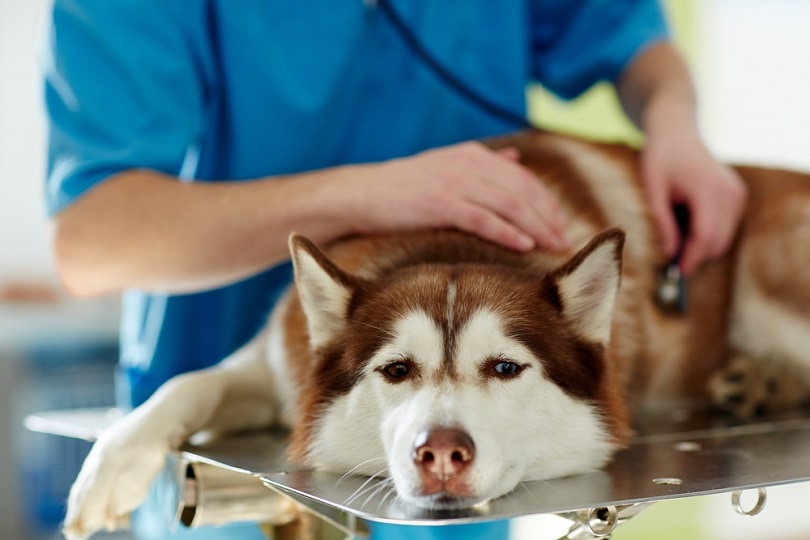
Part of pet ownership is dealing with skin conditions, whether they’re from allergies, hot spots, or the dreaded ringworm. Ringworm is a fungal disease that is particularly common in puppies, older dogs, and dogs with compromised immune systems. It is especially troubling because it is also a zoonotic disorder, which means your pup can transfer it to you too.
Three types of fungi can cause ringworm. The most widespread is Microsporum canis, which accounts for over 2/3 of cases. The disease is appropriately named because of the telltale round bald patches that you’ll see on your dog’s skin. It can also affect their feet and claws, which can cause them to grow misshapen.
While it may look itchy, ringworm usually doesn’t affect your dog this way, unlike in people, where it can make you quite uncomfortable. Secondary bacterial infections in canines and humans can cause additional signs, such as itchiness, redness, discharge, and swelling.
Causes of Ringworm
Like many fungi, ringworm exists in moist and humid environments. These are also ideal places for bacteria to develop. That’s one reason that you should dry your dog promptly after they take a dip in the lake, for example. The fungus exists in soil, so it’s difficult, if not impossible, to avoid contact with it. Dogs that have free run of the backyard or hunting dogs may be more susceptible, and it mostly affects young, elderly, immunocompromised, and long-haired dogs.1
The fungus then resides in your dog’s hair and on their skin. You won’t necessarily see your pet scratching. How the condition proceeds depends on the health of your pup, including their overall skin and coat condition, stress level, health, and age.

Diagnosis
Ringworm typically shows up first on a dog’s head, paws, legs, and tail, but the skin changes can develop anywhere. You may also see areas of hair loss, often regular or round in appearance with a crusty covering, or patchy, scaly gray spots. In some dogs, these may be red. Hair is often damaged, broken, and fragile.
The signs may seem straightforward, but many other skin issues can present similarly. Your vet may use multiple methods to diagnose ringworm, since a gold standard doesn’t exist.
An interesting trait of certain types of fungus is that it can fluoresce under UV light using a device called a Wood’s lamp. It will glow with a yellow-green color. Unfortunately, detection by this method is not definitive, since it is not visible in a small percentage of pets and not all species of fungi will fluoresce under the lamp. That said, there are other diagnostic investigations that can help your vet rule out other conditions, including skin parasites, hot spots, dermatitis, and food allergies.
Doing a fungal culture is a reliable diagnostic method. Your vet will collect hairs from the affected area and try to grow it in a lab setting. The major downside is that it can take up to 2 weeks before the fungus develops, thereby delaying treatment.
Treatment
The first step for treating ringworm is to isolate your pet to avoid contact with other animals. If you can, confine them to a small area. It’ll make the other things that you must do much easier. It’s imperative to follow up with cleaning and vacuuming the rooms, carpets, and furniture that your pet may have used. We also suggest washing their bed or better yet, replacing it. Safely dispose of all dog hair that may be contaminated with ringworm.
We strongly urge you to keep up this routine until the ringworm is gone. If not, your pet can reinfect themselves, and you’ll have to start the treatment process all over again. You should also limit handling your dog. The same precaution applies to everyone in the household, especially children or immunocompromised individuals. They are more vulnerable to contracting the disease.
It’s worth mentioning that ringworm spores don’t reproduce like mold. As long as your dog is infected, they’re still spreading them. Veterinary treatment of the affected dog and cleaning of the environment are effective ways to control this condition and speed resolution.

Medications
Ringworm is often self-limiting and may not require interventions in healthy pets. The risk of this approach, however, is the possibility of secondary infections and spreading the disease to other animal and human family members. Fungal diseases are notorious for their tenacity. The treatment is often lengthy, taking several weeks before it resolves. Your vet will likely use a two-pronged approach, with topical and oral medications.
Several antifungal drugs are available, some of which include terbinafine, miconazole, and itraconazole. On a side note, the same medications are often used to treat fungal infections in humans. If you are experiencing any skin changes, speak to your GP or dermatologist straight away. Both oral and topical treatments combined are often vital to cure this condition. Their primary function is to reduce the number of spores that the fungus sheds to avoid reinfecting the animal or other members of the household.
Your vet may recommend topical treatments, such as shampoos or dips that are similar to what you may use on your pet for fleas. It’s essential to continue with the schedule that your vet recommends. You’ll likely get the confirmation that it’s resolved once there is a negative fungal culture. Your vet may also recommend shaving the fur in affected areas and disposing of the hair, to reduce environmental contamination.
Prevention
Prevention is the best cure, though early detection is also helpful. That’s one reason that regular grooming is vital for monitoring your pet’s skin condition. Ringworm is zoonotic, which means you can also develop skin lesions by being in contact with an infected animal, and you can give your pup this fungal disease too. If you or your children develop it, avoid petting your dog, speak to your doctor, and follow the same precautions.
Conclusion
Ringworm is a common and irritating skin condition. Its unpleasant effects on your dog’s coat and skin are difficult to witness. The best approach is to act promptly and visit a vet if you notice any of the telltale signs. You’ll reduce your pup’s risk of complications and prevent family members from contracting this disease.
Next on your reading list:
- 10 Best Paw Balms for Dogs – Reviews & Top Picks
- Cat Paw vs Dog Paw: Vet-Reviewed Differences Explained
Featured Image Credit: fetrinnka, Shutterstock








